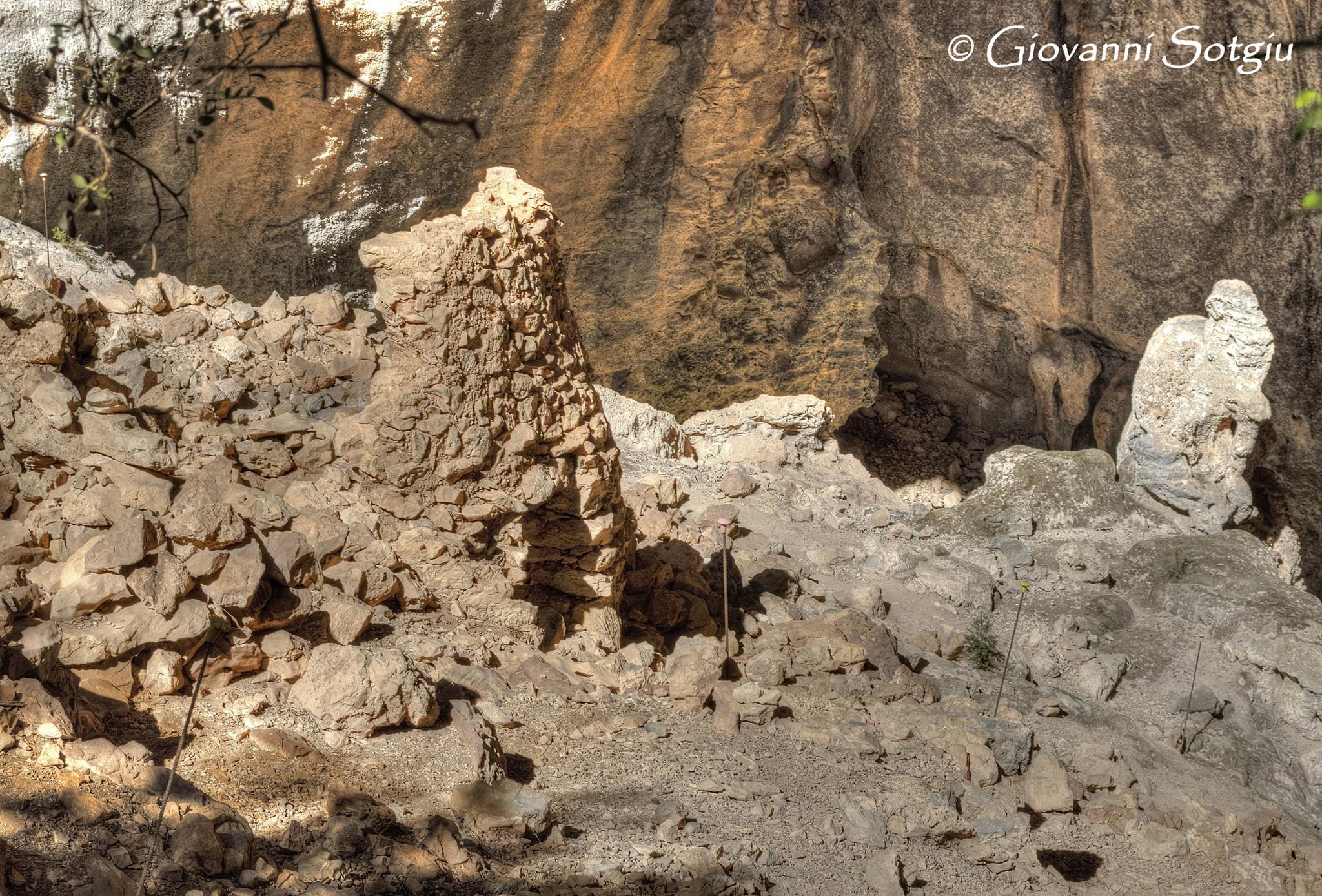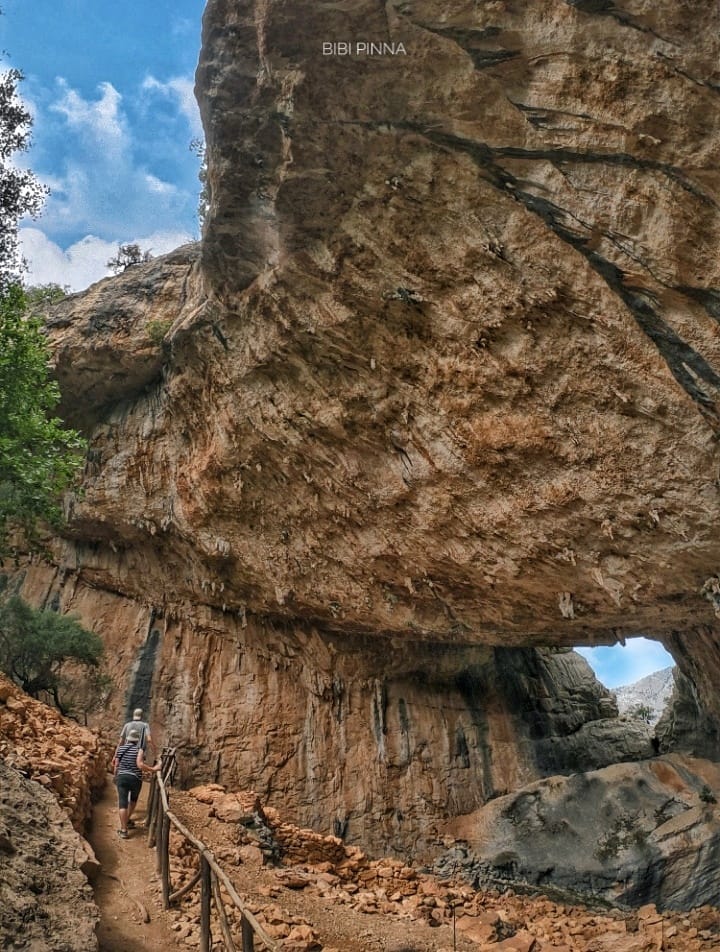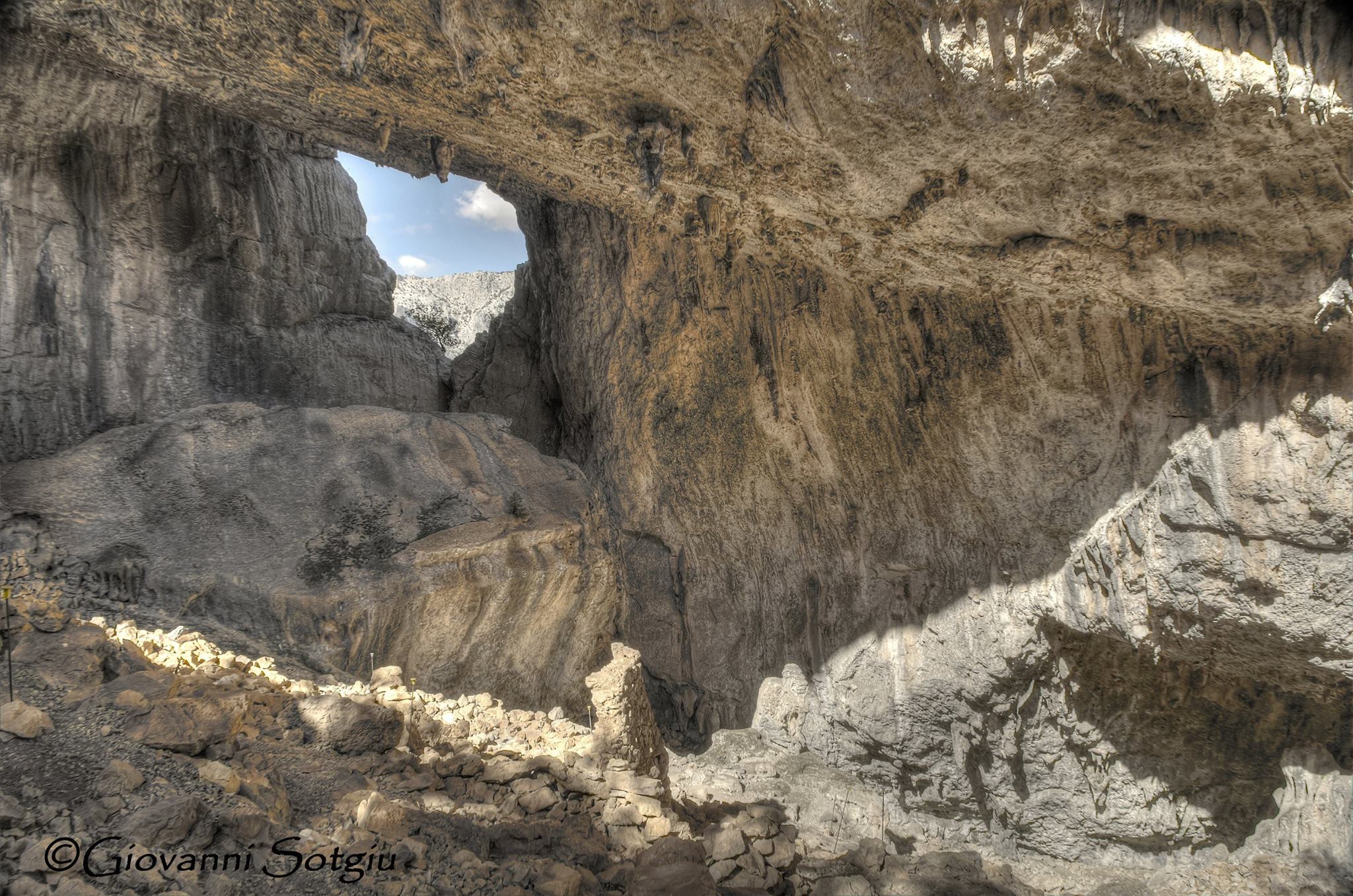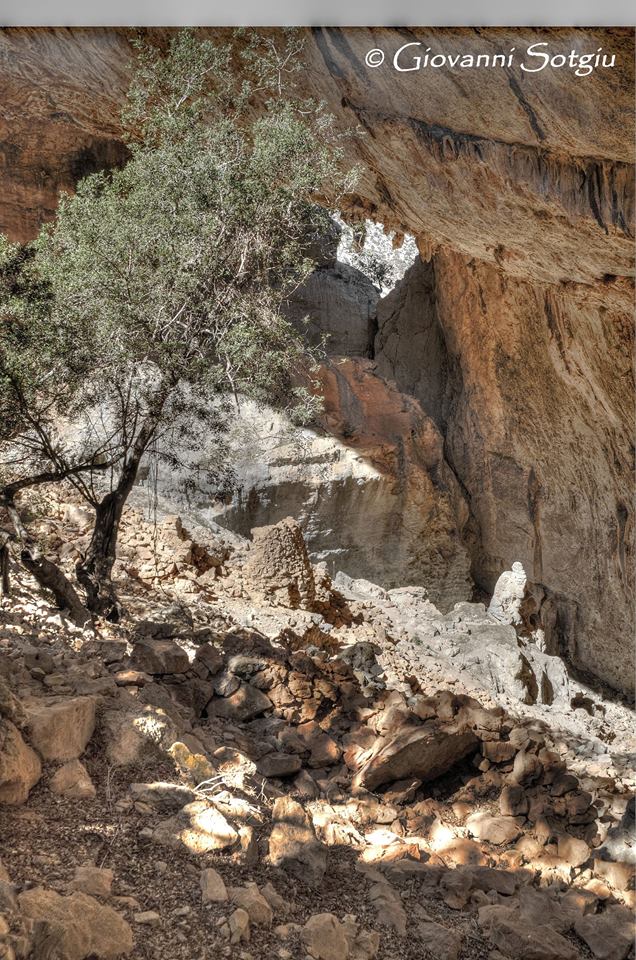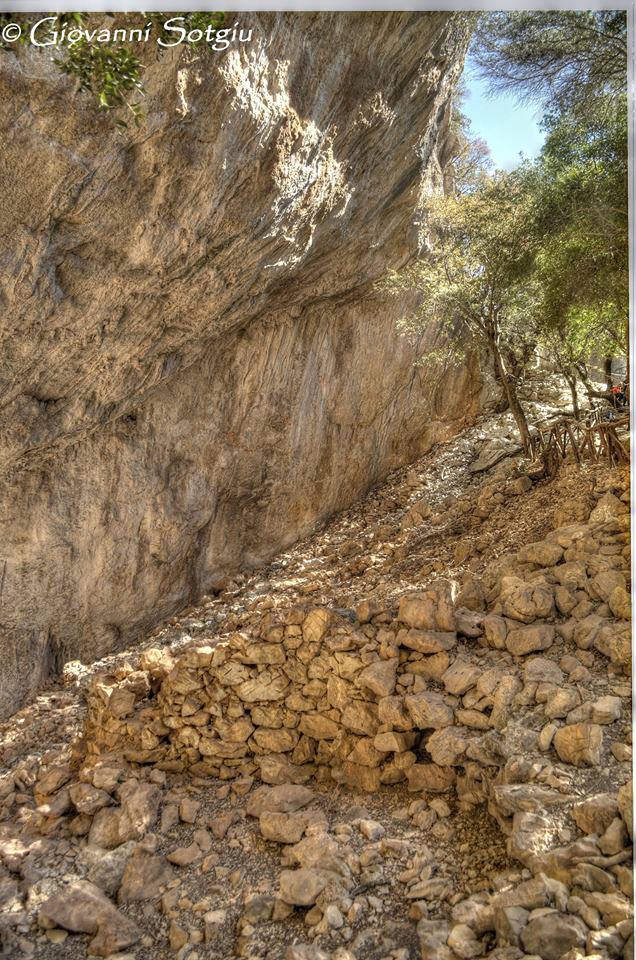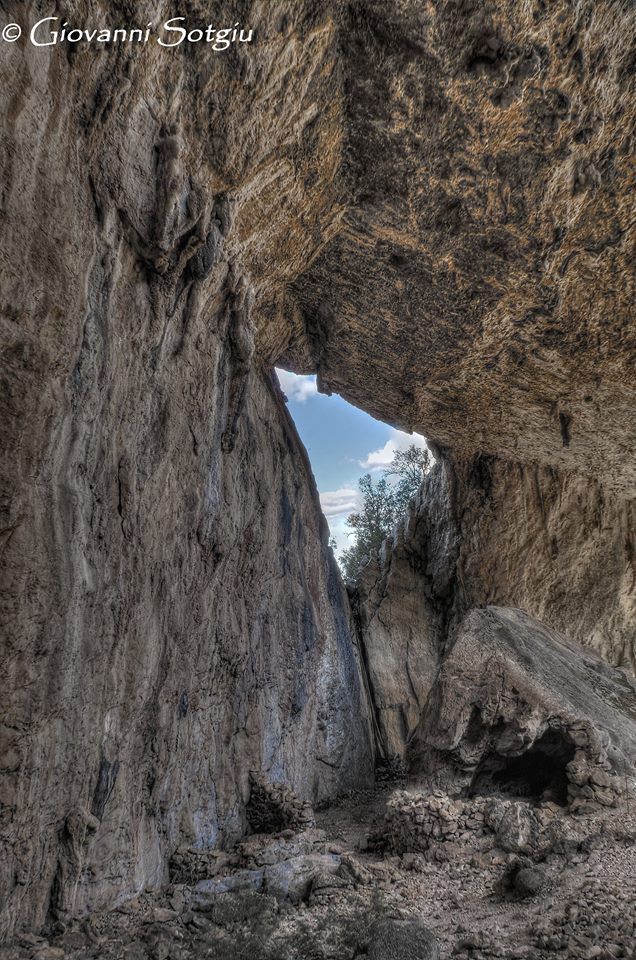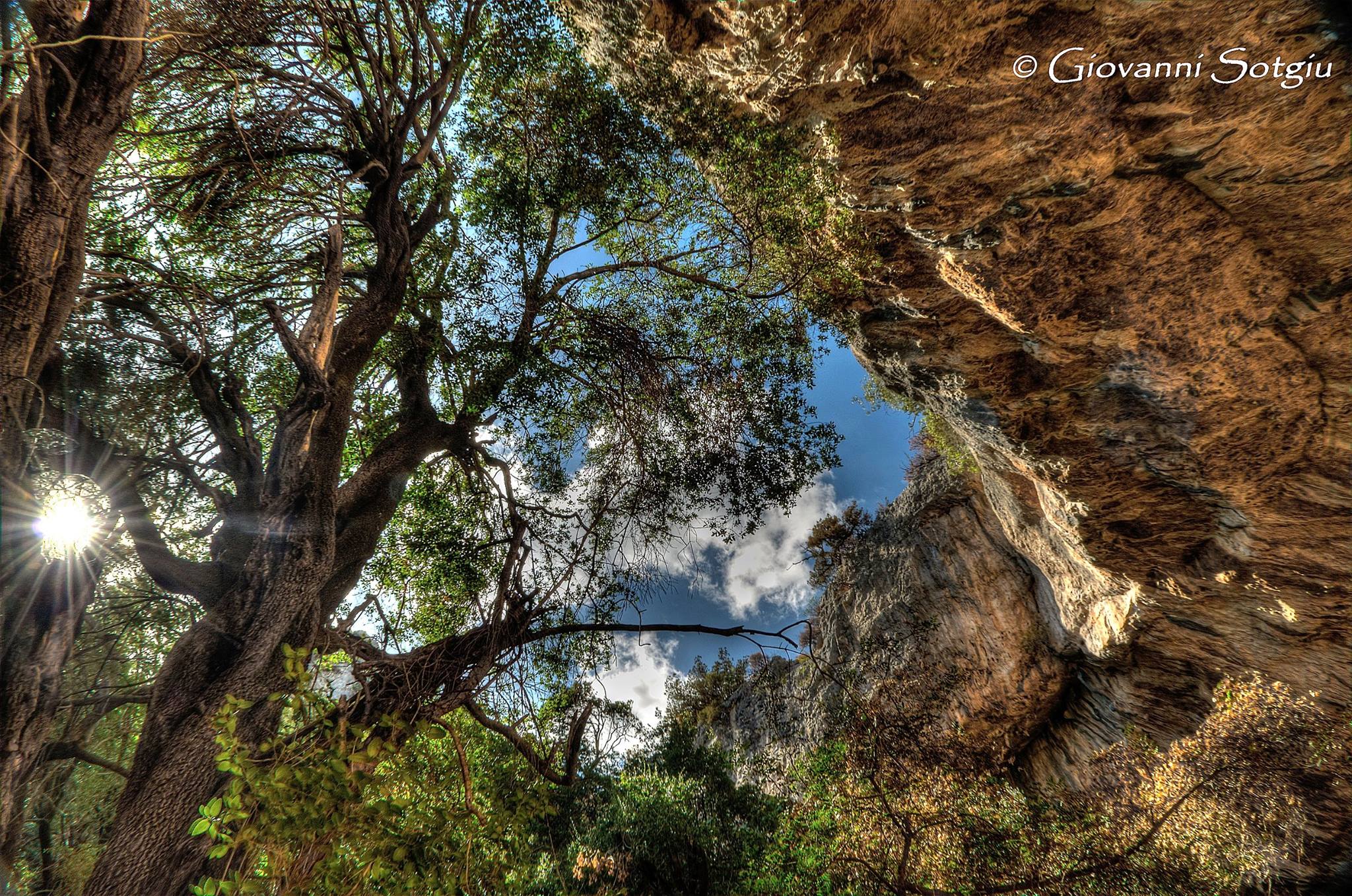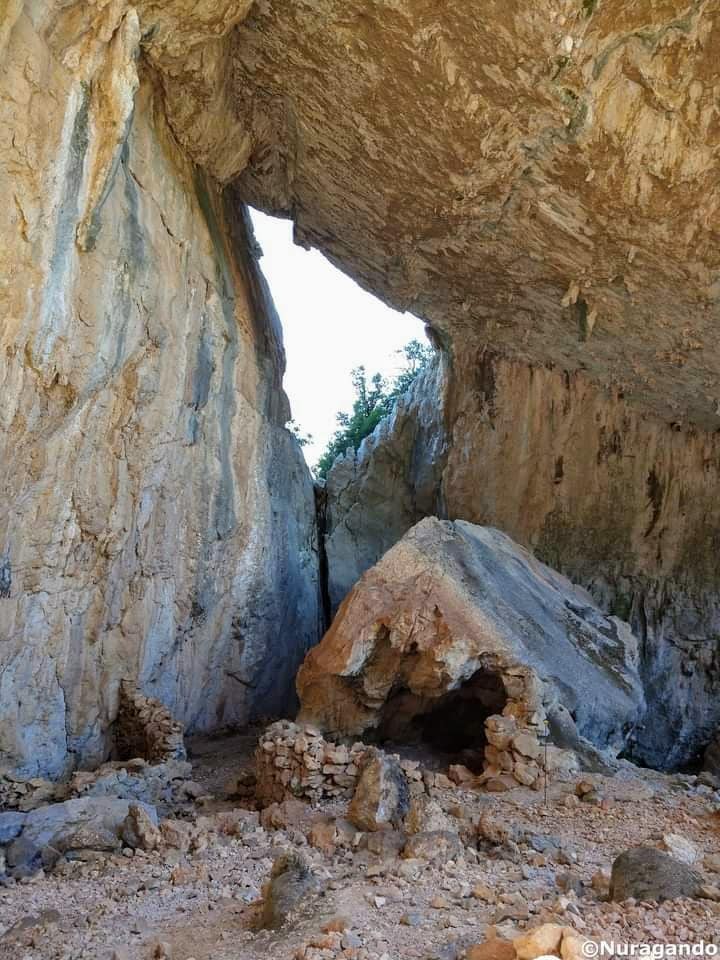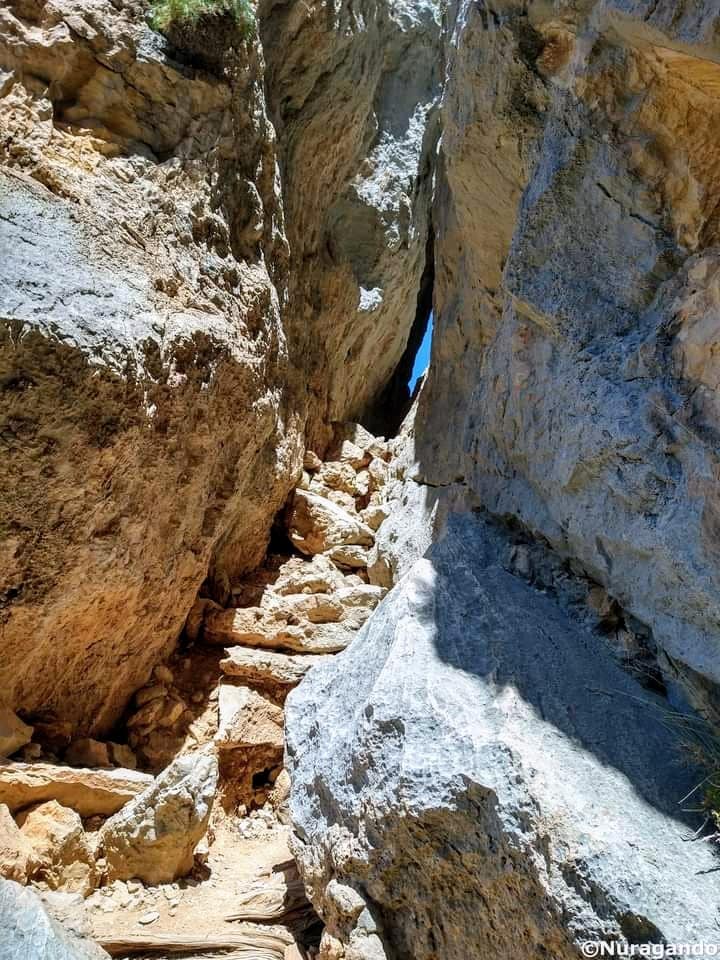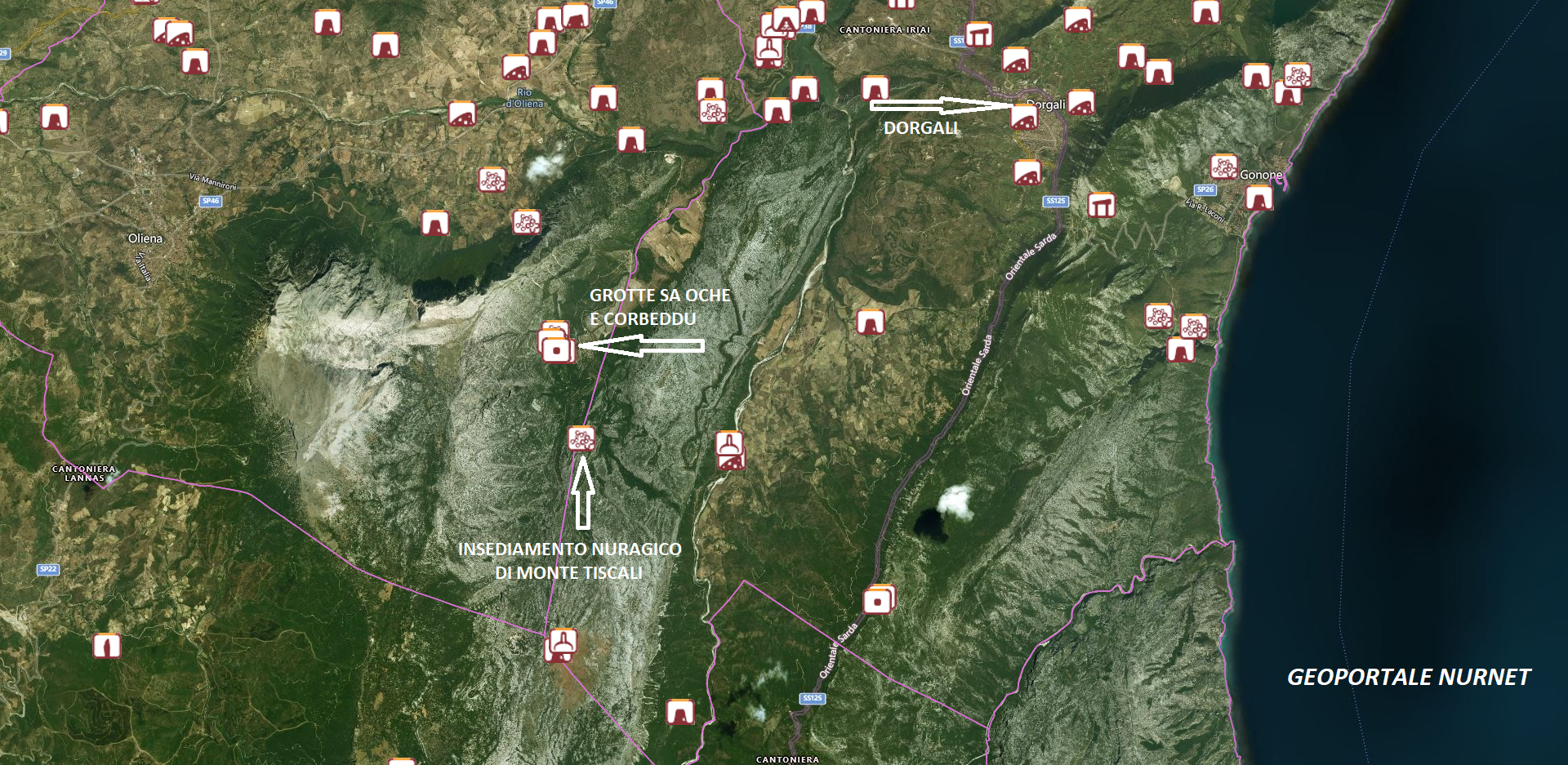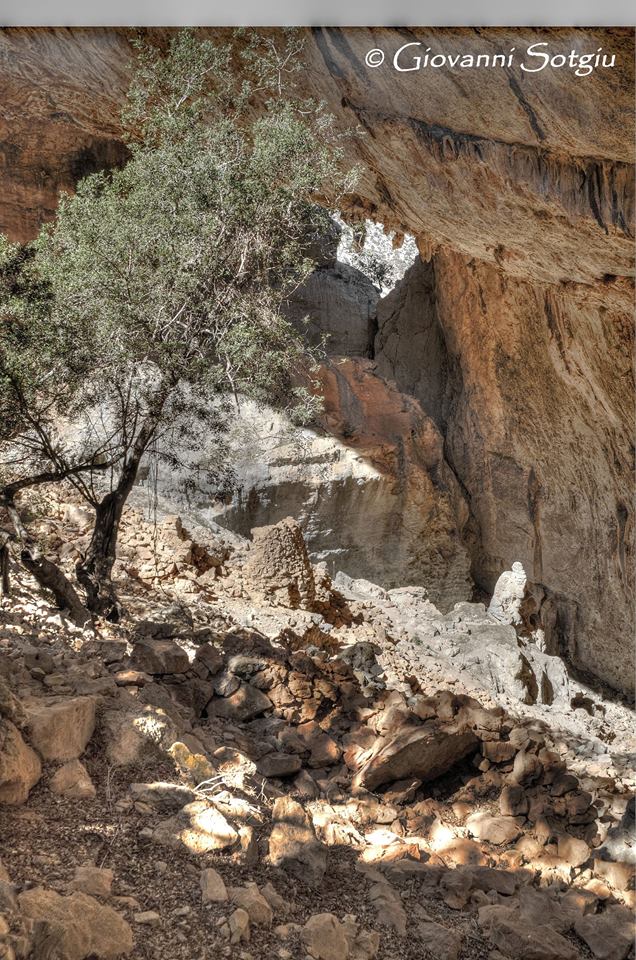11 a: The archaeological area of Monte Tiscali is a settlement from the nuragic age, located in the territory of Dorgali at the border with Oliena “hidden inside a cave – more accurately in a sinkhole – in a site invisible from the outside and accessible only via a difficult and rugged path in the Supramonte, at the summit of Monte Tiscali (about 500 m above sea level)… The settlement consists of about a hundred rooms and auxiliary spaces distributed to the north and southwest of the sinkhole; some walls rest directly against the rocky walls or take advantage of the rock’s shape. The structures have rectangular, quadrangular, circular, or elliptical plans. The walls, of modest thickness, were built using locally sourced limestone stones that were roughly hewn and mortar; the mortar was made by mixing clayey soil (red earth) and gravel, with the addition of organic aggregates. The masonry texture was regularized by filling the gaps between the stones with mortar; the mortar was then smoothed externally following the projection of the walls. In the internal wall thicknesses, small niches and recesses were often created to hold furnishings. Some structures had a truncated-conical shape with projecting walls and, perhaps, a tholos or thatched (logs and branches) covering.” (Archaeological Museum of Dorgali).
The photos of the nuragic complex of Tiscali, in the territory of Dorgali, are by Giovanni Sotgiu, Bibi Pinna, and Nuragando.